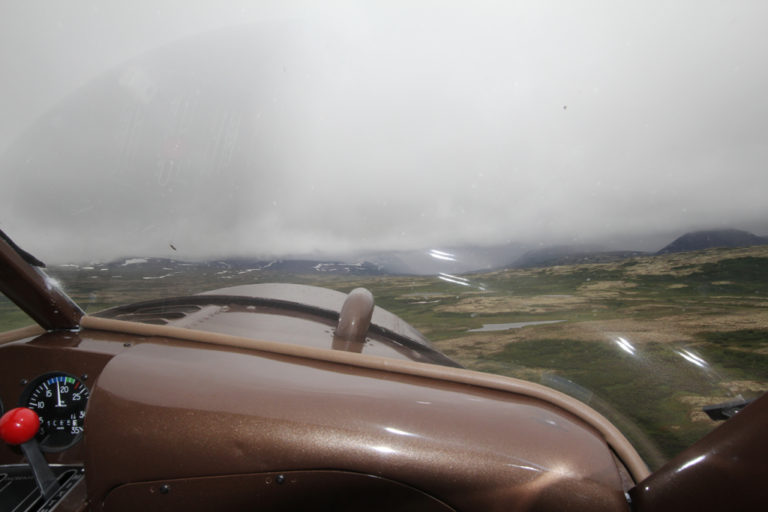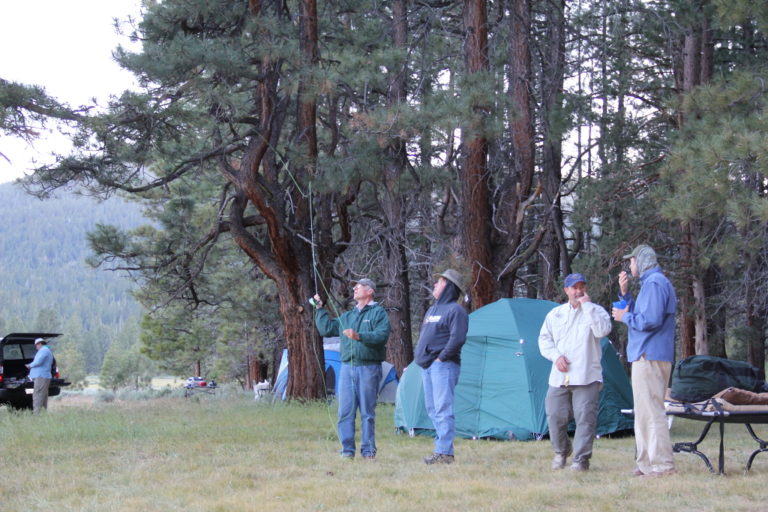Paradise lodge is located on the East coast of the Yucatan Peninsula on a thin strip of beach directly between Espiritu Santo Bay and Chetumal Bay. After flying into Mexico, it’s a five hour drive south from Cancun in a cool, air conditioned van. Anticipation builds, and we look forward to spending long days fishing the two bays and inland brackish lakes.

Paradise Lodge is situated right on the beach. They were hit by hurricane a while back so the local area is still recovering, and the vegetation is very sparse. Even though they are rebuilding, the area’s remoteness adds to the allure of this special place.
On my first trip to the lodge, Eric the lodge manager, asked us what we wanted to fish for. In unison, my dad, John and I both said, “Permit!” We came for permit due to their elusiveness and ability to put up monster fights that feel like you have a sailboat on the end of your line.
John and I have now been to Paradise Lodge twice, and we’re on our way back for a third in the fall of 2015. All the guides are great, but so far, Arturo is our favorite. He was with us when John caught his biggest permit, and we’re hoping to fish with him again.
 When fishing the lakes, the lodge tows small boats with outboard motors to location. However, when fishing Espiritu Santo Bay and Chetumal Bay, the lodge has local style panga boats stored at the water. These boats have a fiberglass casting deck built up on the bow, and guides have a platform built up over the motor for poling quietly through the flats and into the mangroves.
When fishing the lakes, the lodge tows small boats with outboard motors to location. However, when fishing Espiritu Santo Bay and Chetumal Bay, the lodge has local style panga boats stored at the water. These boats have a fiberglass casting deck built up on the bow, and guides have a platform built up over the motor for poling quietly through the flats and into the mangroves.
We mostly use 8 or 10 wt. rods with PT crystal clear lines. Sometimes we’ll use an intermediate sinking line, but mainly we use floating lines with long 40-60 pound test leaders. They’re equipped with a breakaway so we’re less likely to lose our fly line in case the fish breaks off.
Two primary flies we use are the black gurgler and squimp. The black gurgler is fished on the surface when we’re going for tarpon, and the squimp is fished below surface when targeting permit and bonefish.
It takes about an hour and a half to drive 30 miles to Espiritu Santo Bay from the lodge, so to avoid so much time riding in vehicles; we usually only spend a couple of days fishing there.
On the last trip there, we were lucky enough to spot a pod of Permit feeding in a long shallow flat. After John took numerous shots, he handed me the rod, and on my second cast, I hooked into this big guy and was lucky enough to land this fish-of-a-lifetime. As soon as this fish was released, John wasted no time getting back up on the casting platform. He hooked right into a nice permit as well. It was not as big as mine, but he made up for it on the last day of that trip by catching the best fish of his life.


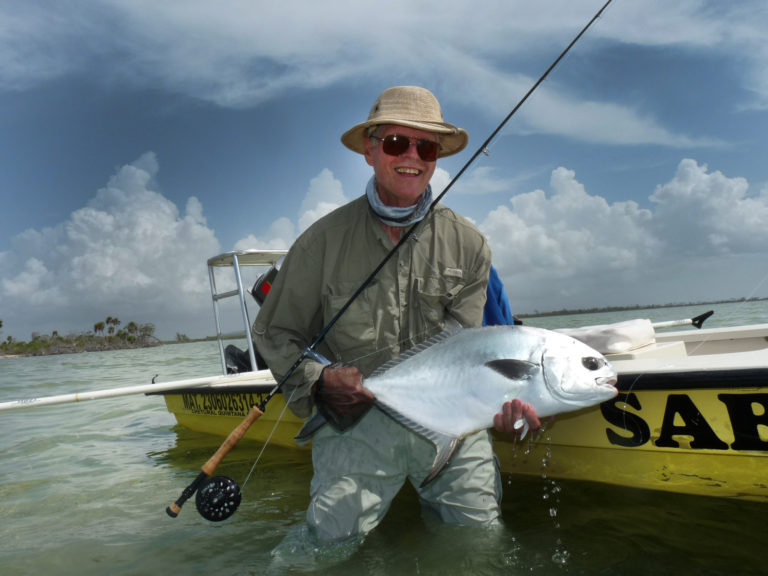
On the other days, we’ll fish one of the inland lagoons in search of tarpon. Due to the confined nature of the mangrove lagoons, you are actually spot fishing. So anglers must hunt for the fish before ever making a cast. But once you find a pod of rolling Tarpon, the fun begins. Typically, we’ll land a few tarpon and jump maybe a dozen more. Above-right is a photo of John with a Bugle Boy, a native fish to the area, that somewhat resembles a bass.
 Another unique aspect of this trip is the inland brackish lagoons located near the lodge. Spotted from the air, these waters have been opened up by the local guides bushwhacking in with their machetes. I understand that they are connected to the ocean via underground tubes, and this is supposedly how the fish arrived. Once in the lagoons, we fish for tarpon and snook.
Another unique aspect of this trip is the inland brackish lagoons located near the lodge. Spotted from the air, these waters have been opened up by the local guides bushwhacking in with their machetes. I understand that they are connected to the ocean via underground tubes, and this is supposedly how the fish arrived. Once in the lagoons, we fish for tarpon and snook.
As the tide comes in, the tarpon move into the mangroves to feed, and we are able to see them rolling and hear them crushing bugs. However, when the tide moves out, the tarpon must move out as well. So our tactics change to ambushing them as they head to open waters.
Once we are done fishing for the tarpon, we can then move out of the mangroves and back onto the flats to sight-fish for bonefish, meaning we don’t cast until we actually see a fish. The guide will silently maneuver the boat into position and the angler gets one chance to present the fly. If the presentation is good, it’s game on!

Occasionally, storms will roll over us while we are fishing. This usually makes a great opportunity to take a break and eat some lunch. However, when you’re overrun by a thunder storm, it’s a different story. Here’s a moment when the lightning was so close, we had to get off the water and wait for the storm to pass. We still ate lunch.

John landed this Permit in the last hour of one of our trips. What an amazing fish!
 I have fished all over the world and I can easily say that Paradise Lodge delivers a world class fishing experience. When you hook into a 40 pound permit, you better be ready for the fight of your life as these fish can sometimes take more than an hour to land! On my last trip to Paradise Lodge, I broke off the biggest permit I’ve ever hooked. On my next trip I have one goal in mind… To catch the biggest permit of my life!
I have fished all over the world and I can easily say that Paradise Lodge delivers a world class fishing experience. When you hook into a 40 pound permit, you better be ready for the fight of your life as these fish can sometimes take more than an hour to land! On my last trip to Paradise Lodge, I broke off the biggest permit I’ve ever hooked. On my next trip I have one goal in mind… To catch the biggest permit of my life!

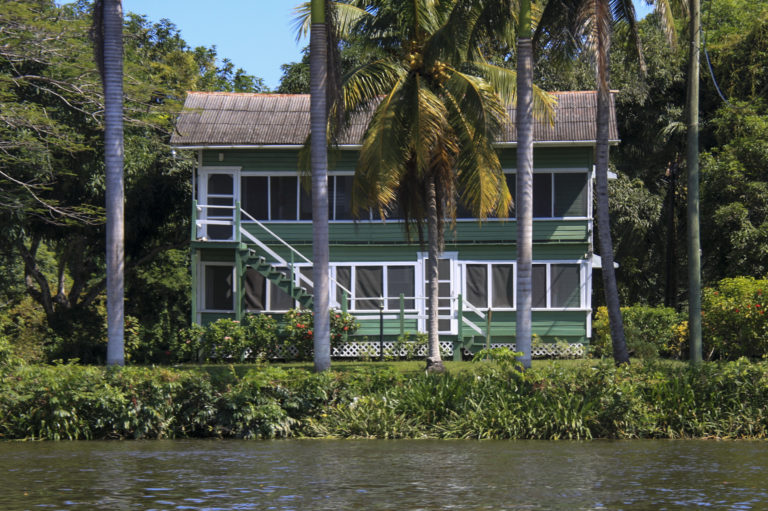 In 2009, I went to Belize River Lodge with my dad, John. This was my second salt water fly fishing experience following a trip to San Felipe, and I was looking forward to gaining more experience fishing for tarpon, permit, bonefish, snook, and more.
In 2009, I went to Belize River Lodge with my dad, John. This was my second salt water fly fishing experience following a trip to San Felipe, and I was looking forward to gaining more experience fishing for tarpon, permit, bonefish, snook, and more.
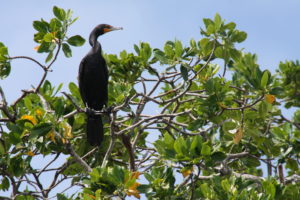



 They use panga boats with casting platforms on the bow and poling platforms above the engine for the guide. Each day we fished, we would take the quick 15 minute ride downriver to Belize City Bay, passing million dollar homes along the way. At one of the homes, a massive iguana named “King Tut” perches on the top branch of a tree while looking over his harem.
They use panga boats with casting platforms on the bow and poling platforms above the engine for the guide. Each day we fished, we would take the quick 15 minute ride downriver to Belize City Bay, passing million dollar homes along the way. At one of the homes, a massive iguana named “King Tut” perches on the top branch of a tree while looking over his harem. Once we get to the river mouth, we search out the mangrove islands for our fishing grounds. While these mangroves provide habitat, they can prove to be challenging while fishing. One of my first bonefish that I hooked took two left turns around the trees wrapping my line the entire way. John, and our guide Pedro, thought this was funny. So, in no rush to help me free my line, they laughed at me while maneuvering the boat slowly to follow the line around. Once I freed the line, I almost fell out of the boat as I was trying to land the fish. Luckily, John grabbed me by my belt loop and kept me in the boat. This was the most memorial fish of the trip.
Once we get to the river mouth, we search out the mangrove islands for our fishing grounds. While these mangroves provide habitat, they can prove to be challenging while fishing. One of my first bonefish that I hooked took two left turns around the trees wrapping my line the entire way. John, and our guide Pedro, thought this was funny. So, in no rush to help me free my line, they laughed at me while maneuvering the boat slowly to follow the line around. Once I freed the line, I almost fell out of the boat as I was trying to land the fish. Luckily, John grabbed me by my belt loop and kept me in the boat. This was the most memorial fish of the trip.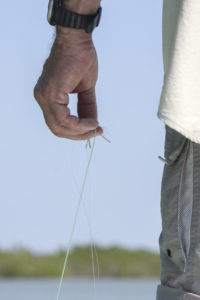

 Casting is crucial when fishing for snook as they hold way back under the trees. So, after the first day of fishing, the guides set up a practice range for us with a trash can placed underneath a picnic table. The idea was for us to shoot the line into the can without hitting the table. This requires super tight loops.
Casting is crucial when fishing for snook as they hold way back under the trees. So, after the first day of fishing, the guides set up a practice range for us with a trash can placed underneath a picnic table. The idea was for us to shoot the line into the can without hitting the table. This requires super tight loops.



